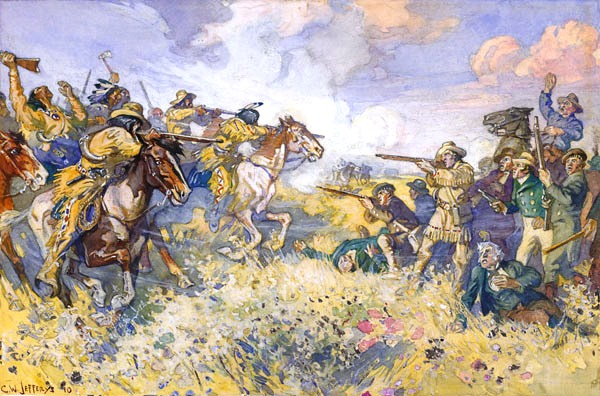
Briefly described below are some of the American Indian events of 1817.
Treaties
Following the Constitution, the United States recognized Indian nations as sovereign entities and thus negotiated treaties with them. In 1817, the primary focus of the treaties between Indian nations and the United States was for the United States to obtain title to Indian land.
In Ohio, a treaty with the Ottawa, Chippewa, Shawnee, Wyandot, and Potawatomi ceded a large part of their territory to the United States. Most of the ceded territory is land which was used by the tribes for hunting and fishing. Under the treaty, the Wyandot retained two reservations, including the Grand Reserve at Upper Sandusky.
The treaty provided three small reservations for the Shawnee totaling 173 square miles. The reservations surrounded their villages at Wapakoneta, Hog Creek, and Lewistown. The reservations were awarded by patent, in fee simple, to the chiefs of the villages.
States
Mississippi became a state which surrounded much of the Choctaw territory. The pressure to put more Choctaw land into non-Indian hands for the production of cotton increased.
Wars
In Arkansas, a multi-tribal force of Cherokee, Choctaw, Chickasaw, Delaware, and Shawnee attacked an Osage village in retaliation for Osage raids. Known as the Battle of Claremore Mound, 80 Osage were killed and 100 captured. Journalist Stanley Hoig, in his book The Cherokees and Their Chiefs: In the Wake of Empire, describes the battle this way:
“The Cherokee raiders fell upon the undefended town with merciless fury. They shot and tomahawked virtually all in their path, regardless of age or sex, driving others into the river, where they were slaughtered.”
The village and its food stores were destroyed. Most of the Osage warriors were out on a hunt at the time of the battle.
The United States prevented the Osage from responding to the attack. A fort—Fort Smith on the Arkansas River—was constructed between the Osage and Cherokee villages to keep the two groups apart. The Cherokee, however, boasted of their victory to the United States government and asked that they be given Osage lands as the spoils of war.
In Nebraska, a Teton Sioux war party killed an American hunter near the Omaha village of Big Village. The Americans and 192 Omaha rushed to the scene and the Americans persuaded the Omaha not to continue the pursuit.
In Florida, the United States demanded that Neamathla, a Red Stick Seminole leader, surrender some alleged murderers. When Neamathla refused, the army sent in a force of 250 men to attack his village. Five Seminoles—four men and one woman—were killed and the rest escaped into the swamp. Historian James Covington, in his book The Seminoles of Florida, reports:
“This episode marked the first action in what has come to be known as the First Seminole War.”
Neamathla’s band then joined forces with the Seminole under the leadership of Kinache.
In Florida, the Seminole attacked and killed a party of 40 Americans. In retaliation, American troops under the leadership of Andrew Jackson invaded Seminole territory, burning homes, and capturing some slaves.
In Alabama, Apalachicola Creeks attacked an American boat party transporting army stores. One American woman was captured.
Tribes
In New York, the Onondaga sold the state a 4,320-acre tract known as the Onondaga Residence Reservation.
In Illinois, the American Indian agent Thomas Forsyth arrived at the Sauk village of Saukenuk. Historian Kerry Trask, in his book Black Hawk: The Battle for the Heart of America, reports:
“At the time it was the largest human settlement anywhere in Illinois and the entire upper Mississippi valley.”
At this time the town was enclosed within a brush palisade on three sides. The houses were substantial structures similar to the Iroquois longhouses—they were 40 to 60 feet long and were the home to 50 or 60 people. There was a large pubic square and a council house. They were cultivating about 800 acres.
In Arkansas, a band of Cherokees under the leadership of Duwala (The Bowl) settled on the east side of the Red River.
In Arkansas, some Delawares were beginning to settle along the Red River.
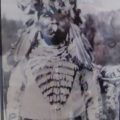
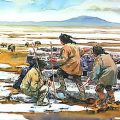
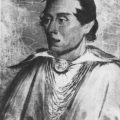
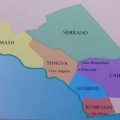
Leave a Reply